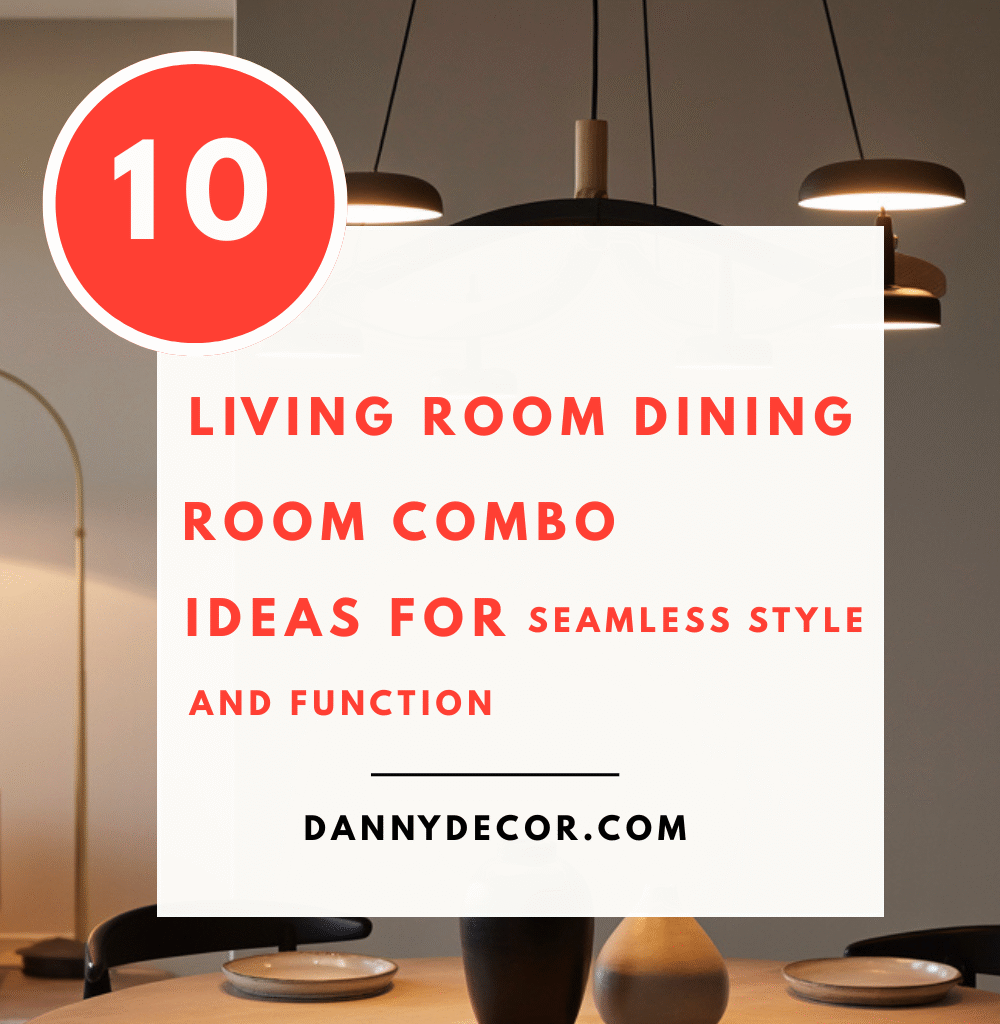
Why Combo Spaces Are Taking Over Modern Homes
Open floor plans aren’t just trendy they’re practical solutions for how we actually live today. Your living room and dining room combo can become the heart of your home when designed thoughtfully.
The challenge isn’t lack of space. It’s creating two distinct areas that feel connected yet purposeful. When done right, these spaces flow together like a well-choreographed dance.
Most homeowners struggle with making combo rooms feel cohesive rather than confused. The secret lies in strategic design choices that define without dividing.
The Foundation: Setting Your Space Apart
1. Master the Power of Statement Rugs
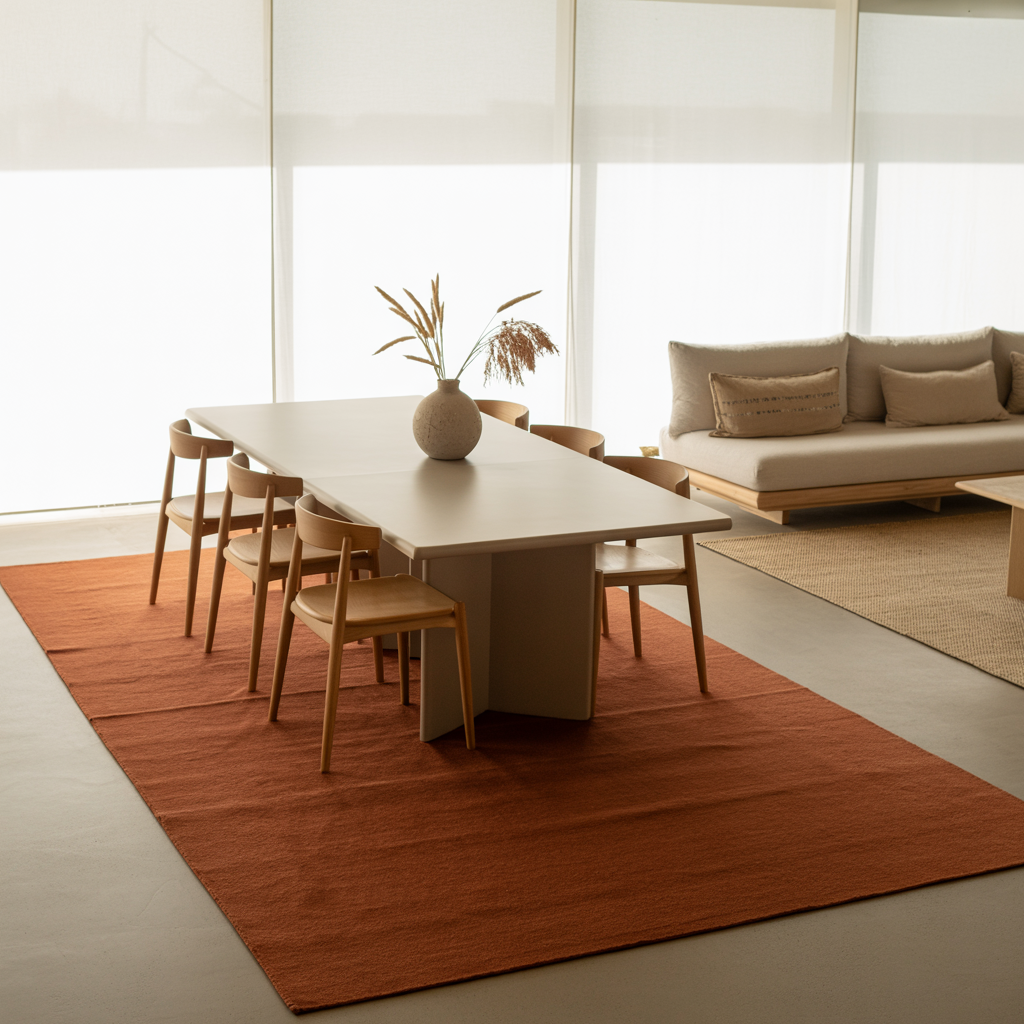
Rugs are your secret weapon for creating invisible boundaries. They define spaces without building walls, giving each area its own identity.
Choose a bold pattern or rich color for your dining area rug. This draws the eye and signals “this is where we eat.” Keep it large enough that all chair legs sit comfortably on the surface.
For the living area, opt for a complementary but different rug. Maybe softer tones or a different texture. This visual contrast helps your brain recognize two distinct zones.
The key is ensuring both rugs share at least one color element. This creates harmony while maintaining separation.
2. Create Intimate Moments with Corner Sofas
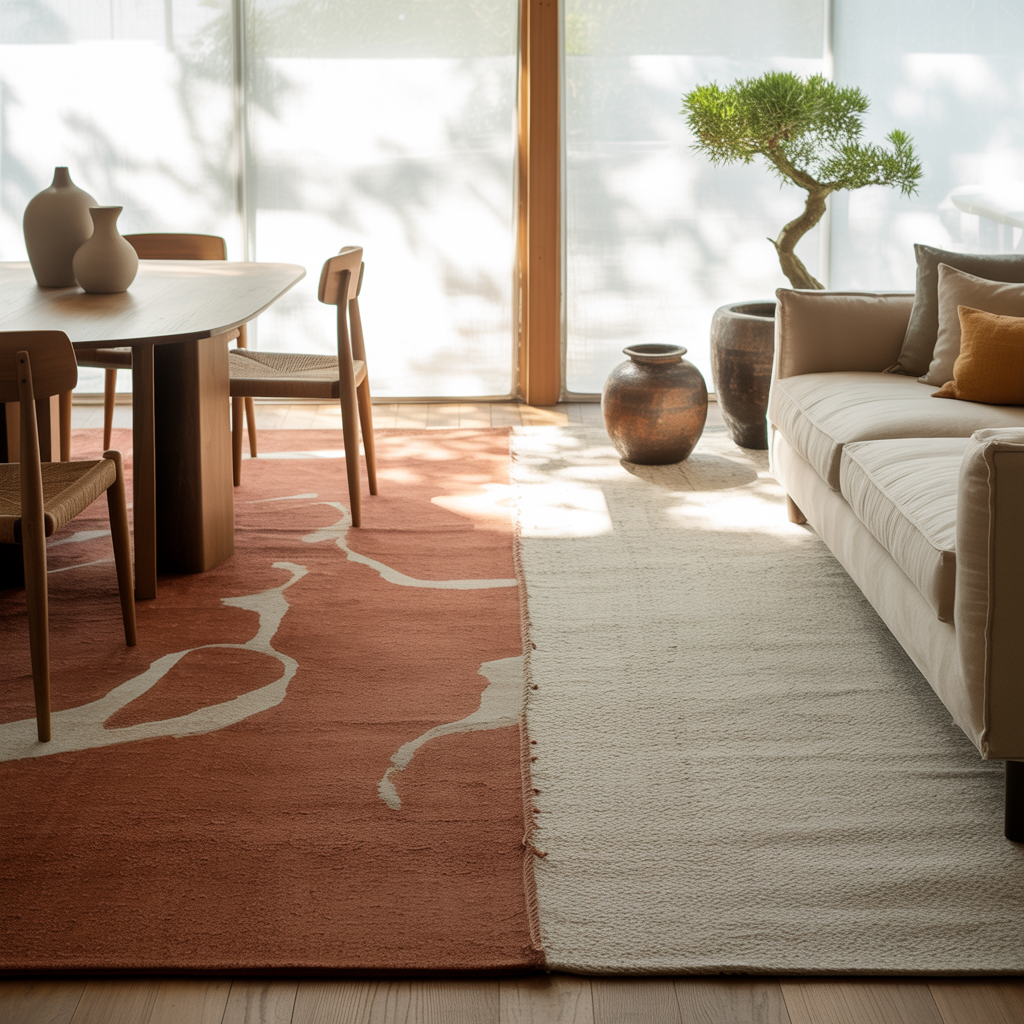
Corner sofas are conversation magnets. They naturally encourage people to face each other, creating cozy gathering spots that feel separate from dining activities.
Position your corner sofa to face away from the dining table. This gives diners privacy while creating a defined living space. Add a small side table for drinks and books.
The L-shape naturally creates boundaries without blocking sightlines. Your space feels larger because you can see through it, but each area maintains its own purpose.
Choose fabrics that invite touch soft linens or plush velvets that make people want to sink in and stay.
Smart Storage: Beauty Meets Function
3. Multi-Functional Furniture That Works Overtime
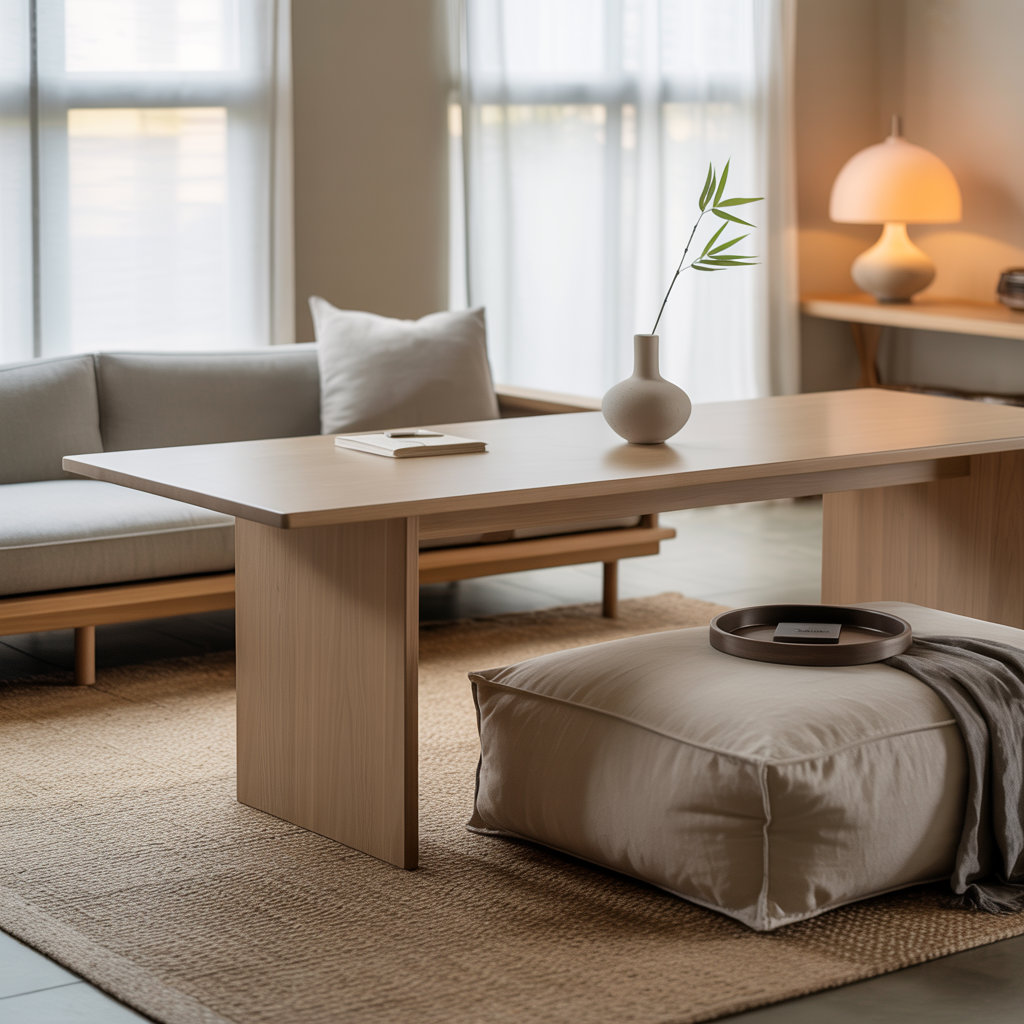
Every piece in a combo room should earn its keep. Furniture that serves multiple purposes prevents clutter while maximizing functionality.
An ottoman with hidden storage becomes extra seating during dinner parties and coffee table for movie nights. A dining table that doubles as a workspace expands your home’s versatility.
Console tables behind sofas provide surface space for lamps and decor while hiding unsightly cords and storage baskets underneath.
The best multi-functional pieces look intentional, not improvised. Choose designs that feel purposeful in both roles.
4. Open Shelving That Tells Your Story
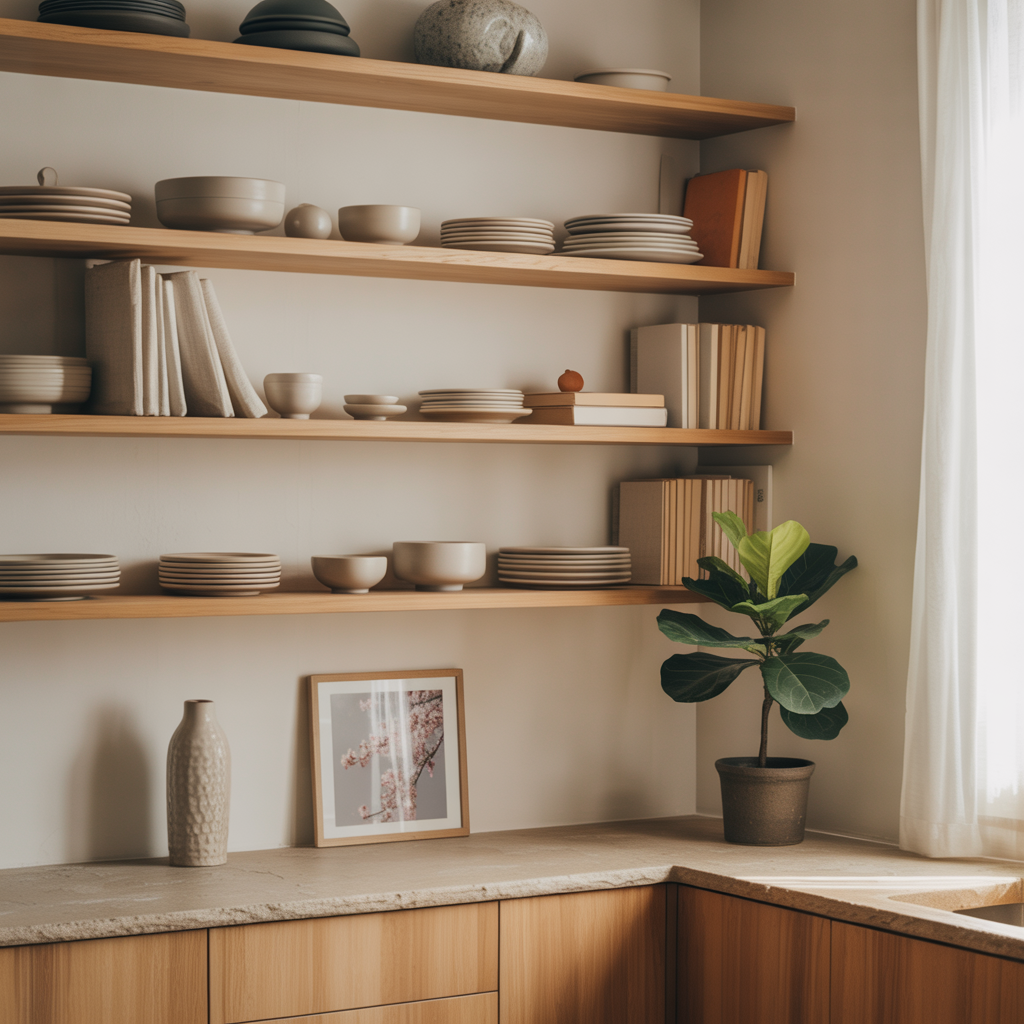
Open shelving creates visual flow between spaces while providing practical storage. The key is curating what you display like a museum curator.
Mix functional items with beautiful objects. Stack dinner plates next to art books. Display serving pieces alongside family photos. This blend makes the space feel lived-in, not staged.
Vary heights and textures to create visual interest. A tall vase next to short candles, smooth ceramics beside rough woven baskets.
Remember the rule of thirds leave one-third of your shelf space empty. This breathing room prevents the display from feeling cluttered.
Lighting: Creating the Right Mood
5. Layer Your Lighting Like a Pro
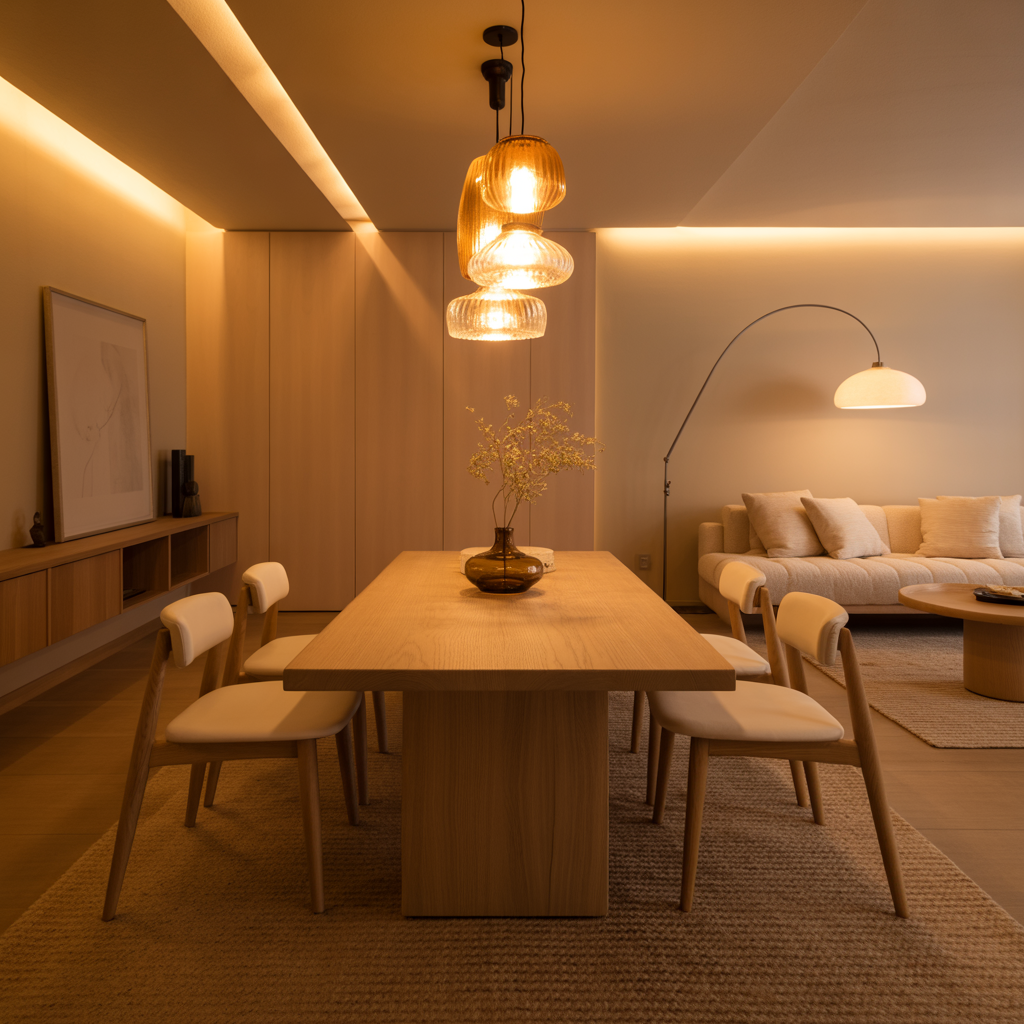
Single overhead lights are the enemy of combo spaces. They create harsh, unflattering illumination that makes everything feel flat and institutional.
Start with ambient lighting soft, overall illumination that sets the mood. Table lamps and floor lamps provide this gentle base layer.
Add task lighting where you need it. Pendant lights over the dining table create focused illumination for meals. Reading lights near the sofa serve evening relaxation.
Accent lighting adds drama and personality. Picture lights on artwork or LED strips under shelving create visual interest without overwhelming the space.
6. Custom Lighting as Artistic Statements
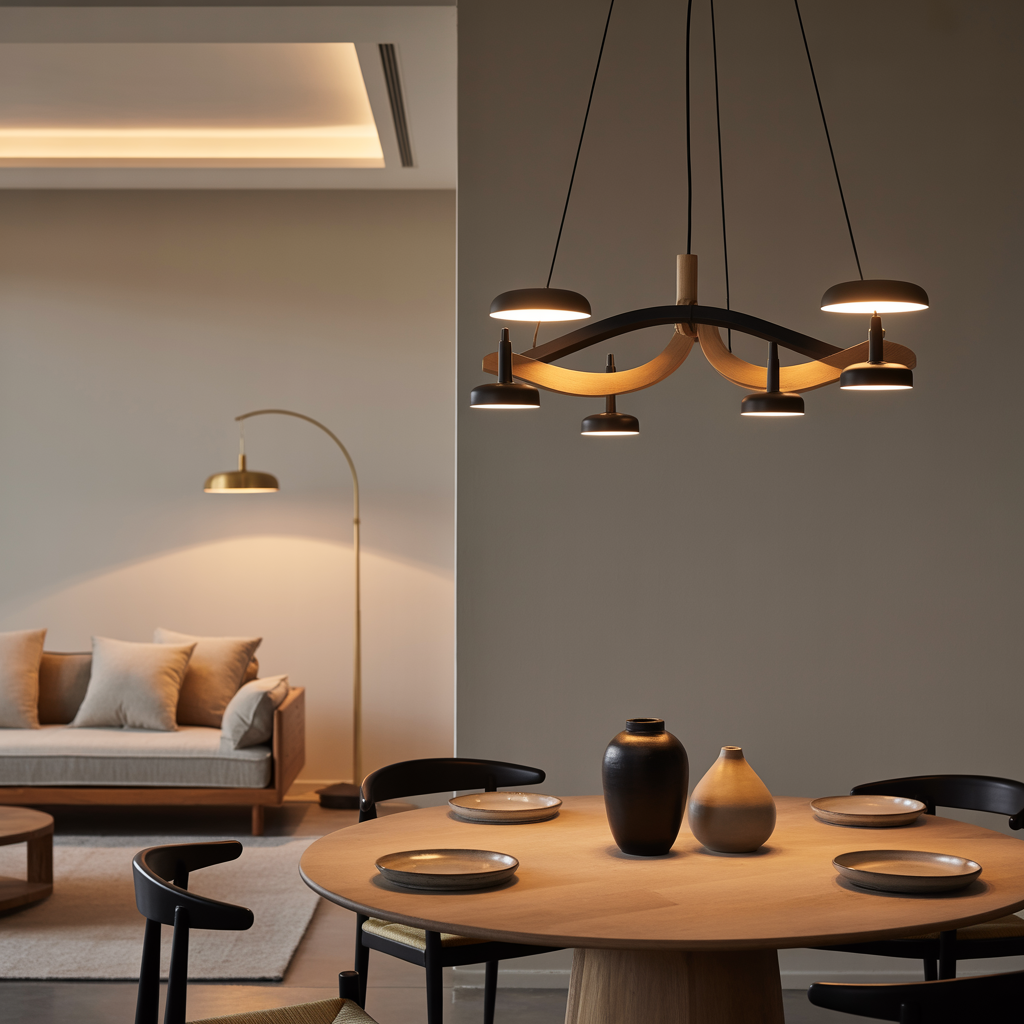
A unique light fixture becomes jewelry for your room. It draws attention upward, making ceilings feel higher while creating a focal point.
Consider a dramatic chandelier over the dining table, but ensure it’s proportional to the space. Too large overwhelms; too small disappears.
In the living area, a sculptural floor lamp or interesting pendant light adds personality without competing with the dining fixture.
Choose finishes that complement your other metals brass with brass, black with black. This consistency creates sophistication.
Visual Tricks: Making Space Feel Bigger
7. Transparent Furniture for Airy Elegance
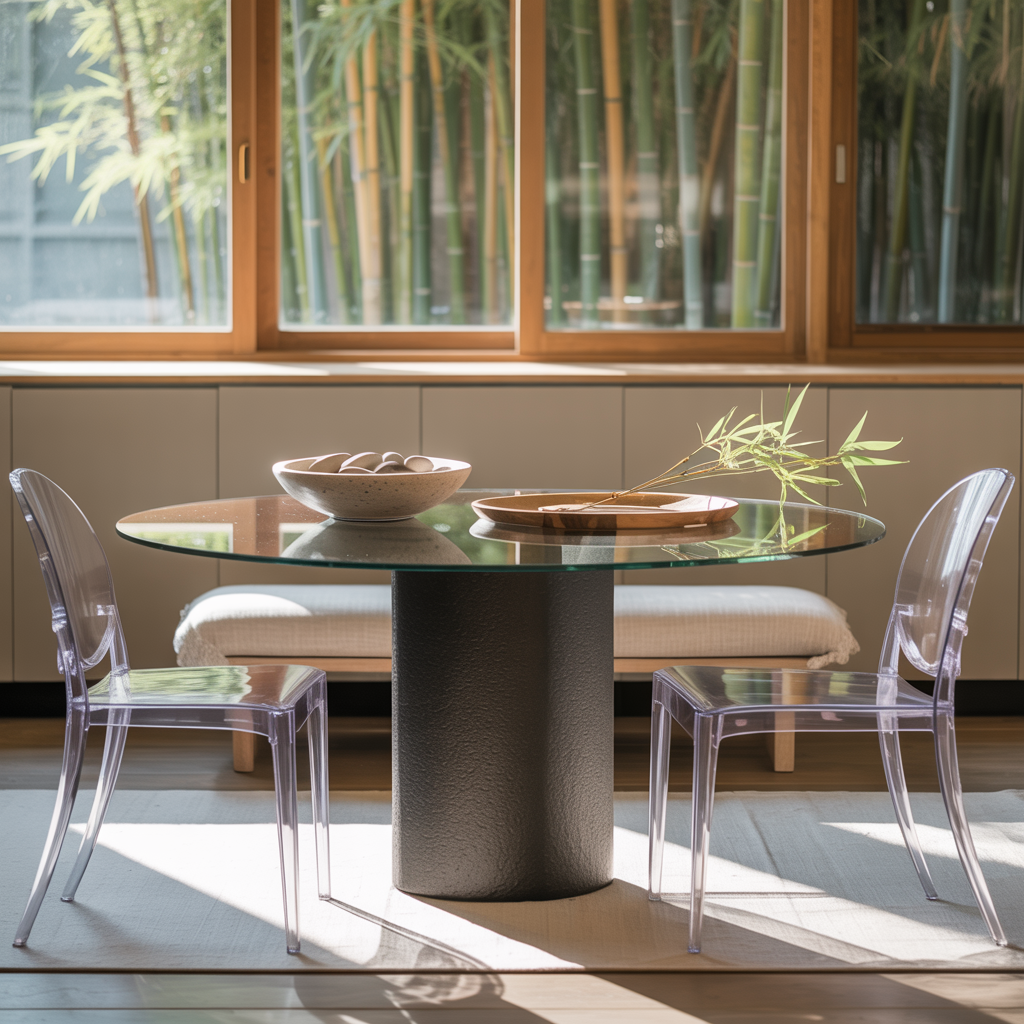
Glass and acrylic furniture pieces create the illusion of more space because they don’t block sightlines. Your eye can travel through them, making the room feel larger.
A glass dining table reflects light and doesn’t visually compete with other elements. Acrylic chairs seem to float, adding seating without bulk.
Balance transparent pieces with solid elements to avoid a cold, sterile feeling. A glass table with wooden legs or fabric-upholstered chairs adds warmth.
Use transparent furniture strategically one or two pieces maximum. Too many creates a showroom effect rather than a home.
8. Mirrors That Work Magic
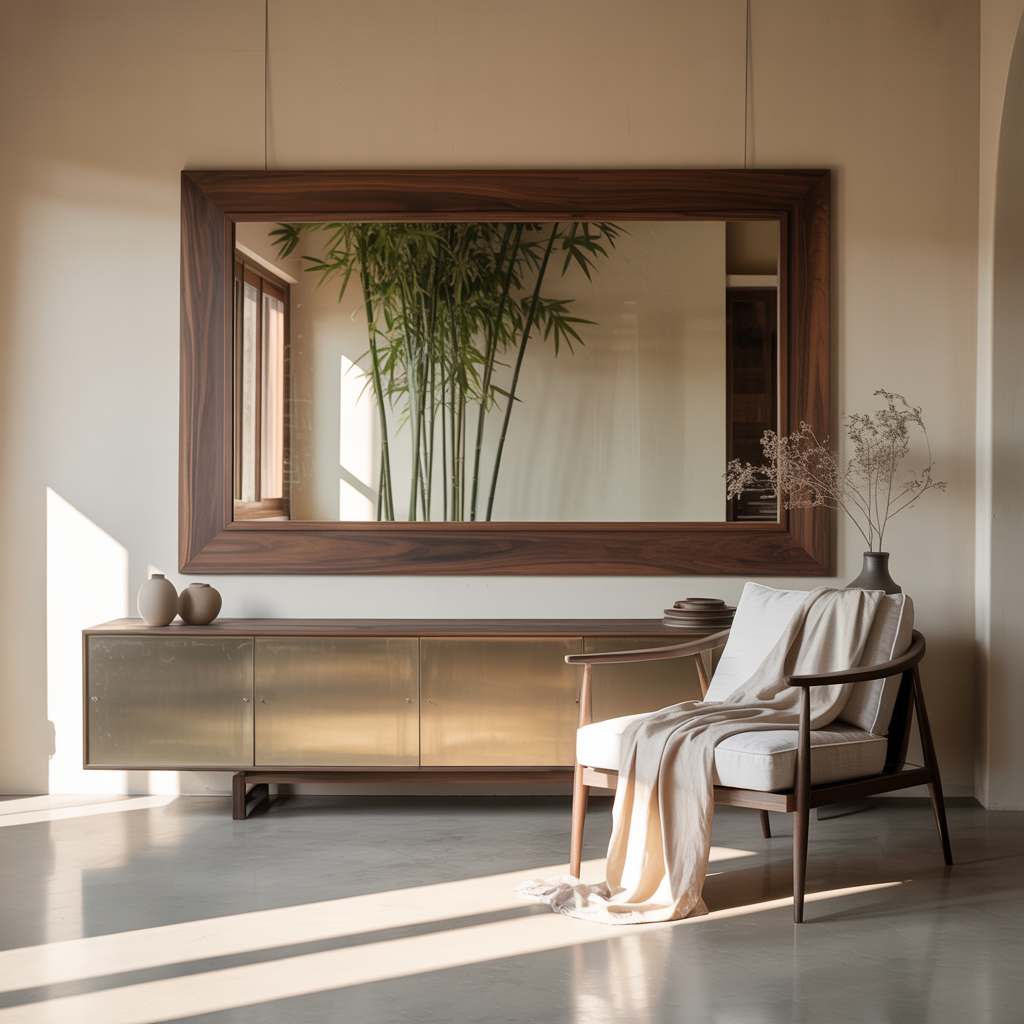
Mirrors are optical illusions that can double your space visually. Place them strategically to reflect light and create depth.
A large mirror opposite a window bounces natural light throughout the room, making everything feel brighter and more spacious.
Avoid placing mirrors where they reflect clutter or awkward angles. The goal is to reflect beauty, not chaos.
Consider mirrored furniture pieces like side tables or buffets. They add functionality while contributing to the space-expanding effect.
Personal Touches: Making It Yours
9. Gallery Walls That Spark Conversation
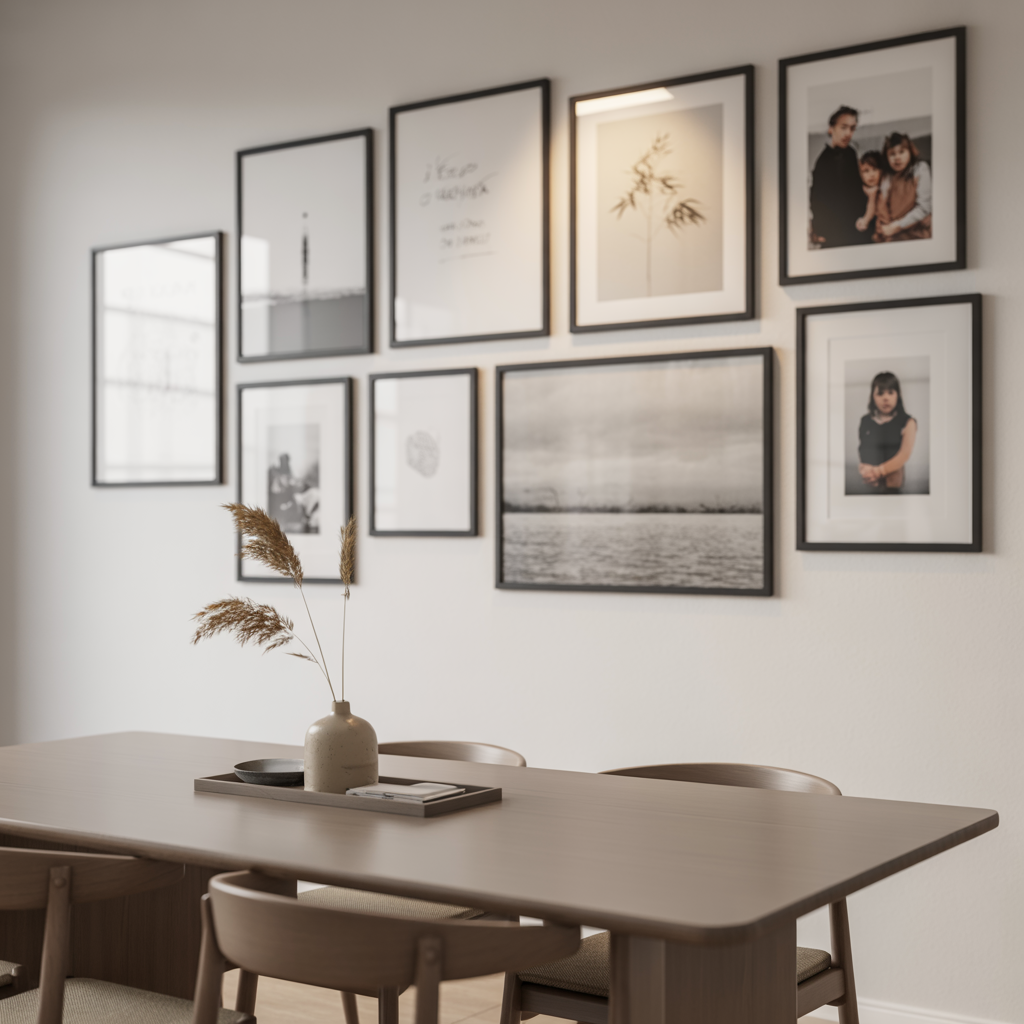
A well-designed gallery wall creates a focal point that defines space while showcasing your personality. It’s like having a conversation starter built into your walls.
Mix different sizes and styles of frames for visual interest. Include family photos, artwork, and even small objects in shadow boxes.
Plan your layout on the floor first. Take photos of different arrangements before committing to nail holes. This prevents costly mistakes.
Keep a consistent element throughout maybe all black frames or a repeating color. This creates unity within the variety.
10. Natural Elements for Life and Energy
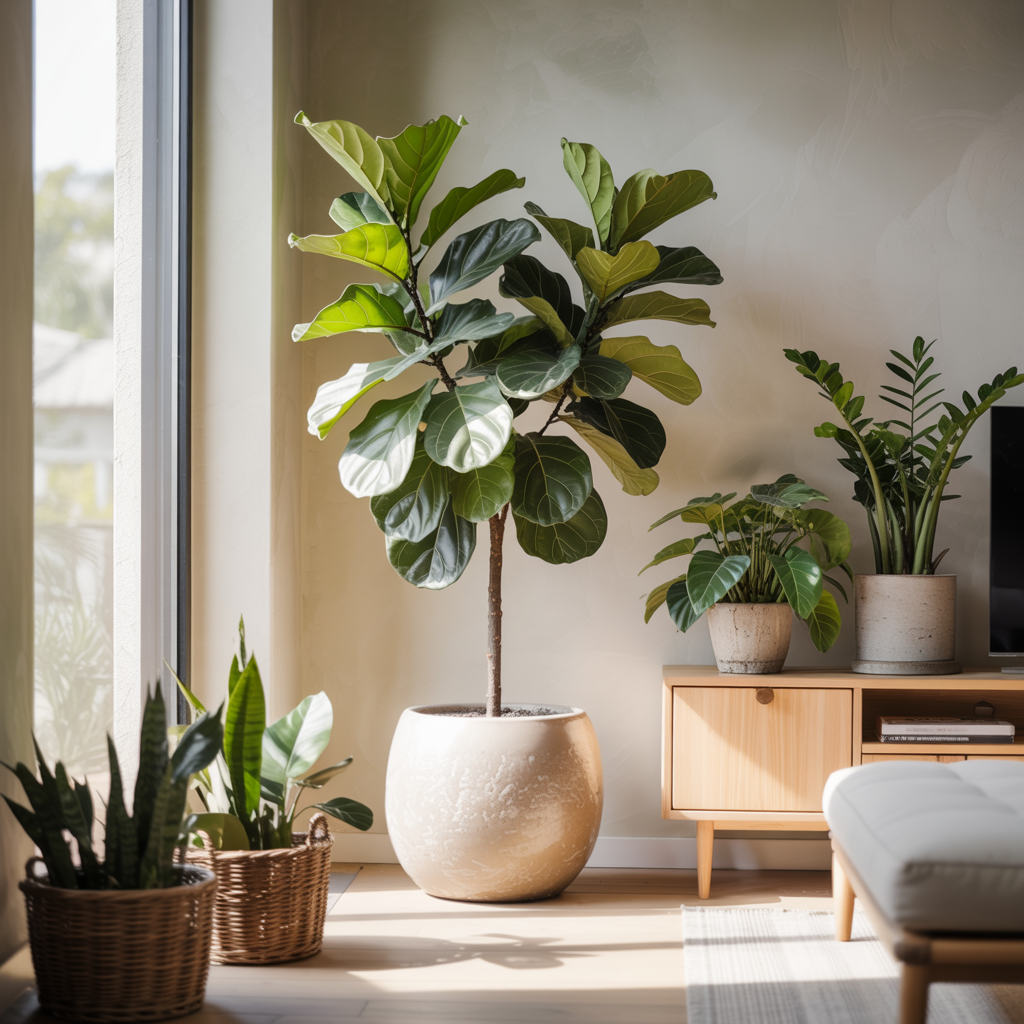
Plants breathe life into combo spaces, literally and figuratively. They add color, texture, and a sense of vitality that artificial decor can’t match.
Choose plants that thrive in your specific lighting conditions. A fiddle leaf fig in a bright corner becomes a living sculpture. Trailing pothos on high shelves adds softness.
Group plants in odd numbers three or five creates more natural, pleasing arrangements than even numbers.
Consider the containers as design elements. Beautiful planters can complement your decor style while housing your green friends.
Bringing It All Together
The best living room dining room combos feel intentional, not accidental. Each element serves a purpose while contributing to the overall harmony.
Start with one or two ideas that resonate most with your lifestyle. Maybe it’s the statement rug that defines your dining area, or the corner sofa that creates intimate conversation space.
Remember, perfect flow doesn’t happen overnight. It evolves as you live in the space and understand how you actually use it. Allow your combo room to grow with your needs.
The magic happens when guests can’t quite put their finger on why your space feels so welcoming and functional. That’s when you know you’ve mastered the art of the combo room.
Your space should feel like a natural extension of how you live comfortable for quiet evenings, adaptable for entertaining, and beautiful enough to make you smile every time you walk in.
